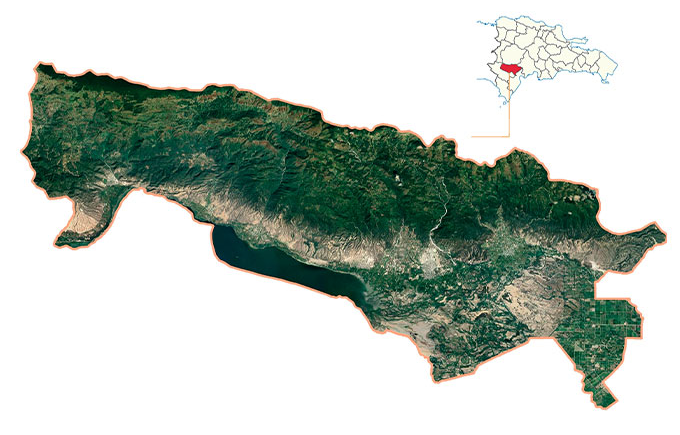
COOPMAIMÓN ARRIVES IN RANCHO ARRIBA IN ALLIANCE WITH UNDP
The program includes financial training for over 300 coffee producers operating in the area. San José de Ocoa, Rancho Arriba.- The Maimón Savings and Credit
The Project Biodiversidad en Paisajes Productivos seeks the effective conservation of ecosystem goods and services in threatened mountain landscapes, plans to develop national capacities to expand coverage and programmatic scope, as well as the potential for replication in the adoption of production models and sustainable livelihood, which potential is great in 3 pilot areas of the Dominican Republic: Southern slope of the Sierra de Neiba, San José de Ocoa and Yamasá.
This project is implemented in the Dominican Republic by the Ministry of Environment and Natural Resources, through UNDP, with financing from the Global Environment Facility (GEF). The main aim is to incorporate the conservation of biodiversity and ecosystem services in public policies and practices, to address threats against biodiversity through integrated landscape management in order to generate the multiple environmental benefits necessary in the maintenance of the multifunctional productive landscape and rich in biodiversity.




| Province | Municipality |
|---|---|
| Independencia | La Descubierta, Postrer Rio. |
| Bahoruco | Neiba, Galván, Villa Jaragua, Los Rios |
An important part of the corridors that connect the protected areas is found in this zone.
It is a coffee-producing area, stands out:

| Province | Municipality |
|---|---|
| San José de Ocoa | San José de Ocoa, Sabana Larga, Rancho arriba |

| Province | Municipality |
|---|---|
| Monte Plata | Yamasá |

The program includes financial training for over 300 coffee producers operating in the area. San José de Ocoa, Rancho Arriba.- The Maimón Savings and Credit

To ensure that future generations grasp the concept of the landscape approach and promote environmental conservation work

EL NUEVO DIARIO, SANTO DOMINGO – The Biodiversity in Productive Landscapes Project of the United Nations Development Programme (UNDP)
Subscribe to our newsletter.
This component incorporates sustainable land management and biodiversity conservation strategies and social and environmental safeguards into land use policy and planning processes through:
On the other hand, the project develops a model for the monitoring of the SDG Sustainable Development Goals at the local level and will involve local and national actors to guarantee the application. Likewise, the incorporation of environmental sustainability criteria in the coffee/cocoa credit policy, and the establishment of sectoral credit mechanisms for the sustainable management of productive landscapes.
Under this component, the project works to improve the connectivity of biodiversity with production systems and protected forest areas through the development of capacities to carry out sustainable forest landscape management, and promote resilient production systems in selected areas. The results are focused on:
This component promotes sustainable livelihoods in communities in the pilot areas of the project that demonstrate adequate management, access to financing mechanisms, training, and implementation of clean technologies through:
This component ensures that knowledge is managed effectively, in support of the conservation of Biodiversity and ecosystem services in productive landscapes of mountain forested areas that are threatened. To achieve this, the project focuses on the generation of knowledge products, on having a wide communication and dissemination of the lessons and experiences to support the replication and expansion of the results obtained.